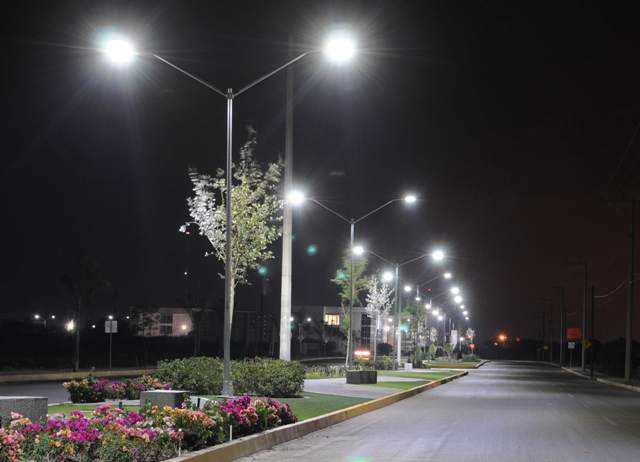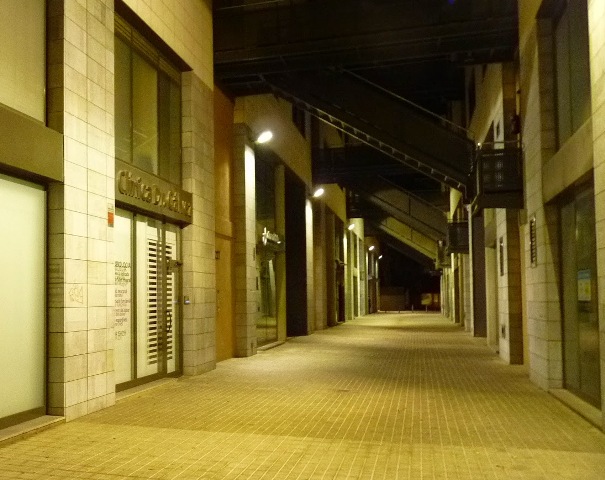Categories: Featured Articles » Sources of light
Number of views: 2082
Comments on the article: 0
Gas discharge and LED lamps for streets and industrial premises - comparison, advantages and disadvantages
Very sophisticated, capacious, often quite powerful lighting systems are always needed to illuminate streets and industrial premises. In connection with the data, which has already become a traditional state of affairs, the logical question arises: is it possible to make these systems less energy-intensive, more economical, and so that at the same time they would remain sufficiently durable.
The answer to this question is logical: yes, this is possible if the transition to more modern, more advanced and economical light sources is ensured. It is already clear (based on at least 15 years of experience) that these new light sources have a very high working resource, and their optical characteristics are preserved for at least 10 years. We are talking about LED light sources.

Until recently, a variety of discharge lamps have been traditionally used everywhere for street and industrial lighting, but in recent years there has been a growing trend towards the transition to luminaires using LED technology, which meets all the requirements for both energy efficiency and optical parameters, and, most importantly, environmental friendliness and durability .
The most popular discharge lamps in past years, such as DRL - high pressure arc mercury lamp, DRI - metal mercury arc lamp and DNAT-sodium low and high pressure tube lamp - although they have a number of advantages, nevertheless today they are forced to concede place LEDs.
Let's recall how wonderful these lamps are, why they have been used for so long and successfully, in addition, we will pay attention to their shortcomings and summarize for each type of lamp a summary.
DRL
High-pressure arc mercury lamps can still be found in many lanterns on the territory of plants, in industrial premises of these plants, in yards, in open areas, in warehouses, in perimeter lighting systems - in short, where the requirements for color rendering and color temperature in in general, it’s not critical.
DRL lamps have a color rendering acceptable enough for ordinary lighting, are easy to install, and do not require regular maintenance under the conditions for observing the rules for their use. However, mercury is contained inside such a llama, because mercury vapor is an integral component of the DRL lamp, where the pressure inside the bulb reaches approximately 100,000 Pa.

The lamp looks quite simple: a threaded base, a glass bulb, inside there is a tubular mercury burner with argon, there is mercury in this tube. An electric discharge in mercury vapor creates radiation, almost half of the spectrum of which falls on the ultraviolet part of the spectrum. The phosphor, with which the lamp bulb is coated from the inside, is "engaged" in the conversion of ultraviolet light into visible light.
The luminous flux of such a lamp strongly depends on the mains voltage, and if the supply voltage drops by 10%, the luminous flux decreases by 25%, and if for some reason the voltage in the mains drops to 80% or lower, the DRL lamp simply will not light up or goes out.
Summary: the DRL lamp has good color rendering, does not have the ability to smoothly control the light flux, it light output It lies in the range from 30 to 60 Lm / W, its efficiency is low, the warranty period is approximately 6000 hours, the DRL lamp starts and restarts for a long time, it contains toxic mercury.
DRI
An arc mercury metal halide lamp also uses an electric discharge in gas to produce light.Here, in the dust inside the flask, along with mercury, light-emitting additives are used: bromides and metal iodides. Indium, thallium, sodium iodide - allow you to increase the luminous flux to 95 or more lumens per 1 watt.
The color rendering of lamps of the DRI type is better than that of the DRL, the light is white with slight differences in color temperature. Inside the lamp there is a burner in which an electric discharge in the mercury vapor with additives flows during lamp operation.

Depending on the composition of the vapor, the color of the DRI lamp light changes, for this reason it is the DRI lamp that at one time gained popularity as light sources for solving architectural problems of color design. Often DRI lamps can be found in backlight systems for billboards and shop windows, in floodlights in large stadiums, in the illumination of commercial buildings and just streets.
Summary: the DRI lamp has excellent color reproduction, but does not have the ability to smoothly control the luminous flux, its light output ranges from 80 to 110 Lm / W, the lamp is average in economy, the warranty period is about 9000 hours, the DRI lamp starts and restarts for a long time, there is inside mercury.

DNAT
At the heart of the work arc sodium tube lamp - electrical discharge in sodium vapor. Lamps of this type produce a characteristic orange light. They can be found in street lamps along with mercury, but in recent years there has been a tendency to replace mercury lamps with low-pressure sodium lamps, which are more efficient and less harmful in the composition of the gas inside the bulb.
Sodium lamps are distinguished by the greatest light output of all discharge lamps for industrial applications. However, low-pressure sodium lamps are susceptible to ambient temperature — the lower the ambient temperature — the lower the luminous flux. But high-pressure sodium lamps still contain a significant amount of sodium compound with mercury. For this reason, high-pressure sodium lamps cannot be called environmentally friendly.

So, low-pressure sodium lamps (NLND) have a light output of about 100 lumens per 1 watt, they are suitable for street lighting in yards where the color of the lighting is not important, here it is orange, and you simply don’t have to judge the quality of color reproduction, because the subject will be white appear orange or yellow, and green is blue. For this reason, low-pressure sodium lamps are not particularly in demand as fixtures for architectural purposes.
High pressure sodium lamps (NLVD), unlike low pressure sodium lamps, have high color rendering, which allows us to distinguish colors in almost the entire visible spectrum. Various additives to the gas mixture in the flask, as well as various phosphors, plus varying the pressure inside the lamp - these measures allow you to slightly adjust the color rendering parameters of the HPLC, but reduce the lamp efficiency.
In general, the efficiency of high-pressure sodium lamps is in the region of 30%, and the light output is about 75 lumens per 1 watt of power consumption. Adding sodium amalgam to the high-pressure sodium lamp made it possible to increase the luminous flux and color rendering, but this made the lamp environmentally unsafe. In addition, the stability of the supply voltage is important to any sodium lamp.
Summary of sodium lamps: DNAT lamps have poor color rendering, do not have the ability to smoothly control the light flux, light output lies in a wide range from 75 to 120 Lm / W, the sodium lamps have an average economy, the warranty period is about 15,000 hours, the lamps start and restart for a long time, in one quantity or another, mercury is present.
LED
LEDs (LED - stands for Light-emitting diode - light emitting diode) in modern installations of industrial and street lighting significantly surpass any gas discharge lamps both in energy efficiency and in operational and environmental characteristics.
They convert electric current into light without any electrical discharges in the gas, requiring mercury, a certain pressure in the bulb, often even the bulb is not needed by LEDs. The luminous flux of the LED source is created at the semiconductor junction, on the composition of which the wavelength (in fact, the color) of the light depends, the shade of which is slightly corrected by the phosphor used.

LEDs are very economical, their light output reaches 120 lumens per 1 watt, they have no harmful substances such as mercury, no glass. With continuous use of the LED lamp for 80,000 hours, its luminous flux will only halve after this time, while gas-discharge lamps lose a fifth of the luminous flux already in the first year of operation. Moreover, even after this long time, the color temperature of the LED lamp will remain.
To power the LED lamp, its own stabilized power supply is used, which is not afraid of voltage fluctuations in the network up to 20%, in addition, the power supply of the LED lamp can easily incorporate the possibility of smooth adjustment of power, and accordingly - of the light flux.

Summary: LED lamps have excellent color reproduction, have the ability to smoothly control the light flux, their normal light output is about 120 Lm / W, the efficiency is always high, the warranty period reaches up to 80,000 hours, while the lamp does not become worthless. LEDs instantly start and restart, they are missing mercury.
Conclusion
Thus, it is LED lamps in all respects (energy efficiency, light quality, environmental friendliness, long-term reliability) that surpass any gas discharge lamps.
See also at bgv.electricianexp.com
:
